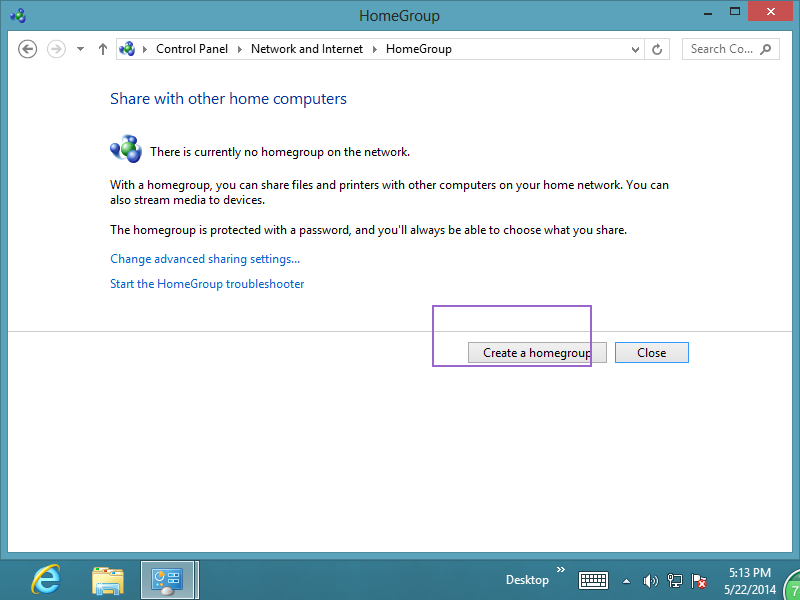In this article, I am going to share something about how to use homegroup feature on Windows 8, such as how to create a homegroup in Windows 8, how to add another computer to the homegroup, etc. If you are pretty interesting, just read on!
::How it works?
Like you know, the homegroup feature allows you to share files or devices on a homegroup network. But how it works? In short, someone created a homegroup and he could invite other computers in the same LAN to join the homegroup so that he could easily share something with them. And the man he invited should show the password before becoming a member of the homegroup.
::How to create a homegroup in Windows 8?
Press Windows + W -> type in “homegroup” -> Click choose homegroup and sharing option -> Click on create a homegroup -> click Next -> choose the files or devices (like printers, scanners and so on) and click Next -> Take down the homegroup password. -> click on Finish.
- Tips: This password works when you want to access files or devices located on another computer. All you have to do is to add your computer to the homegroup after typing the right password (Of course, the homegroup creator should share you with the password in advance.).
::How to join a homegroup on Windows 8?
Note: The computer where you created a homegroup and the computer that you want to add to the homegroup should locate in the same LAN. If not, they won’t be able to connect to each other.
On another computer that you want to add to the created homegroup:
1. Click Windows logo + X keyboard shortcut (or Click the Start button on Windows 7, Vista, XP) -> click Control Panel.
2. Under network and internet, Click the Choose homegroup and sharing options link. ->Click Join now, and then follow the homegroup wizard to input the password.
- If you do not found any Join now button, first, check if your internet connection is available. Second, check if the homegroup that you want to join has been created. Generally speaking, the system can automatically detect the homegroup(s) in the local area network (LAN) as long as the homegroup exists and the internet connection is available.
Related Posts:
- How to Turn off Narrator on Windows 8
- How to Turn off Firewall on Windows 8
- How to Use Net User & Net User Localgroup Command
